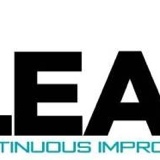Information
-
Document No.
-
Location
-
Unit Number
-
Conducted on
-
Prepared by
-
Picture of Unit.
Engine
-
1.1 Coolant level: Insure level to base of fill neck, check "services required" if you add more than a half gallon
-
1.2 Engine oil level: Insure oil level is at full mark on the dip stick. Replace at 300hrs. Or when ever contamination is present.
-
1.3 Hydraulic oil level: Fill tank to appropriate level. Drain any condensation before filling.
-
1.4 Air intake piping: no unplugged holes, loose or missing clamps, & no visible leaks.
-
1.5 Cooling fan belt condition & tension: Inspect for cracks, frays, & excessive stretch or wear. Replace if needed.
-
1.6 Radiator: no leaks, no fin contamination to cause air flow restriction, steam clean as requires, shroud intact and mounting bolts tight.
-
1.7 Oil & Fuel filter condition: Replace at 300 hrs or when rusted, leaking, dented, or bad fuel is present.
-
1.8 Fuel, Air,& Hyd. Tank condition: Inspect all for rust, dents, cracks, leaks, vents, caps, and valve defects.
-
1.9 Air, Fuel, Hyd. Hoses: Inspect all hoses for damage, wear, leaking, excessive rust, or cracks. Replace as needed.
-
1.10 Diesel level: Insure there in not < than 1/2 of a tank. Drain any condensation.
-
1.11 Engine oil pressure: Not less than 15 psi with engine at idle, not less than 50 psi with engine running full throttle.
-
1.12 Gauges & Indicators: Must work from zero to full gauge range within limits of system being measured.
-
1.13 Hyd Quick couplings: Check for leaks, excessive corrosion, non-standard size/style will require repair or replacement and retest.
-
1.14 Air compressor @ full charge: 115-125 psi, must hold post SD for minimum of 30 minutes with valves open, not > than 10% loss allowed.
-
1.15 Air intake filter: Indicator should be below 20 in. Vacuum with engine running at full throttle, replace filter if indicator is in red area or if 25 in. Or more of vacuum is measured with engine running at full throttle, retest after replacing filter.
-
1.16 Coolant temperature: OEM spc of 200 deg. Operating temperature.
-
1.17 Check for exhaust leaks: Check for any leaks and /or defects. Repair or replace if needed
-
1.18 Fuel/Oil/Coolant Leaks: Observe very closely all hoses, piping, couplings, pump, and radiator for visible leaks of principle engine liquids, none are to be allowed.
-
1.19 Air compressor mounting: Bolts tightened to OEM specs.
-
1.20 Fan hub: No bearing deflection allowed, check for deflection with belt tension release, replace worn bearings, and grease with no more than 3 shots.
-
1.21 Guards and covers: Radiator, drive shafts intact, in place properly fastened, inspected for structural integrity.
-
1.22 Exhaust brackets/guards: Inspect for rips, tears, loose or missing bindings or blankets must be replaced.
-
1.23 Air Intake Vacuum restrictor: Indicator should be reset to 0 vacuum with engine off, replace defective vacuum indicator, and recheck vacuum after replacing indicator.
-
1.24 Fuel pressure: 50-60 psi @secondary filter. Check while engine is running at full throttle.
-
1.25 Throttle operation: Idle to full rev functionality via twist type air assist control valve.
-
1.26 Engine kill system: "normal" kill button when depressed must immediately shut off fuel air supply killing engine the engine completely.
-
1.27 Engine kill system: "Emergency" kill button when depressed must immediately shut off air supply and killing the engine completely.
Transmission
-
2.1 U-joints/drive train: All bolts present and tight, no excess slack or play, apply grease to each joint.
-
2.2 Transmission oil level: Must be at full mark on dip stick
-
2.3 Transmission service: Charge spin filter @ 600 hrs or 6 months. Charge oil & filter @ 1200 hrs or 12 months or when ever contaminated.
-
2.4 Thrust bearings: Inject fresh grease with only two shots max.
-
2.5 Shifter linkage bushings: Inject fresh grease with only two shots max.
Pump power end
-
3.1 Lube oil System: Change oil and filter when contaminated or every 1000 hrs. Clean reservoir, strainer, and breather cap @ oil change.
-
3.2 Lube oil pressure: 40 psi min. @ 175 deg f., RV set at 100 to 125 psi.
-
3.3 Crosshead extension rod: Visually inspect, no deep scratches, nicks, or pits. Replace if oil stops seals are being cut, no burrs, dirt or damaged pilot on end.
-
3.4 Gear box oil: Verify sight glass full, drain condensation before checking, 90 wt.
Fluid End
-
4.1 Packing nuts: packing nuts are cylinder specific. Numbers stamped on nuts must match respective cylinder
-
4.2 C-pump: No leaks on packing, no leaks on hydraulics, grease cup full, and pump greased
-
4.3 Plunger: Inspect condition, no scratches, pitts, nicks, or rough finish on plunger wear surface, no burns or dirt on matting pilot ends, replace as needed.
-
4.4 Stuffing box: No scratches, wear or other defects in bore. Inspect packing brass for excessive wear, nick or burns.
-
4.5 Valves: No cuts, excessive wear on incerts, no coating or particle adhesion that may prevent proper valve opening or closing.
-
4.6 Seats: No corrosion that may hinder free valve motion, no erosion or cracks between seal face and seat.
-
4.7 Intake Manifold: Must be clean and free of debris and cement.
-
4.8 Fluid end mounting fasteners: Each has mech. Indicator. 1" bolts should be at to of black line (90%), 3/8" bolts should be apx (75%), replace if indicator is not working.
Trailer
-
5.1 Landing gear: greased no cracks on pins or pads
-
5.2 Slack adjusters: greased
-
5.3 All lights: Insure all lights are functional and working properly
-
5.4 Tires: in good condition
Miscellaneous
-
6.1 Equipment labeling: IPS decals on all skids and in good condition
-
6.2 Fire extinguisher: mounted stocked and current inspection.
-
6.3 Tie down straps: 2 each stocked
-
6.4 Spill control: properly stock with absorbent pad and emergency containment kit
-
6.5 Packing lube system: Grease guns working, check valves installed and functioning, hoses and fittings inspected for integrity.
-
6.6 Air Oiler/Driers: Cleaned, filled with oil.
Fluid pump test
-
7.1 Connect 4" suction hose line from tank to C-pump inlet.
-
7.2 Prime C-pump with water to atmosphere
-
7.3 Run Engine to let hydraulic fluid warm up
-
7.4 Throttle to max engine rpm (2100) with C-pump engaged, discharge open
-
7.5 Close discharge valve and record C-pump shut in pressure psi
-
7.6 Divert C-pump flow to triplex suction manifold with High pressure discharge valves open. Fill high pressure pump fully. Close discharge to test suction manifolds. No leaks
-
7.7 Test fluid end to 12,500 psi. No leaks. Bleed off pressure
-
7.8 Begin pumping in 9th high, throttle engine gradually to rpm with discharge valves open
-
7.9 Record C-pumps discharge pressure psi. Should be 20psi minimum
-
7.10 Install test choke
-
7.11 Test high pressure pump using a chart recorder. Pump at 1/2 bpm @ 2200 psi and pump at 3 bpm at 5500 psi
-
7.12 Close choke and test low pressure at 250 psi for 5 minutes
-
7.13 Close choke and slowly pressure up to 9000 psi and hold for 10 minutes.
-
7.14 Verify that grease lube system is functional while pumping. Note what pop off valves are set at.
-
7.15 Dead head hydraulic aux system to 2000 psi. No leaks.
-
7.16 Verify that pump tractor, trailer and control cabin are clean. If not clean them
Certification
-
Addition comments or concerns not other wise addressed.
-
Operator signature
-
Supervisor Signature
















